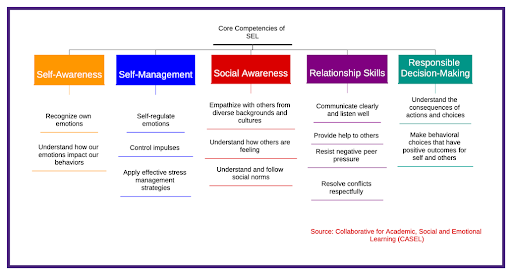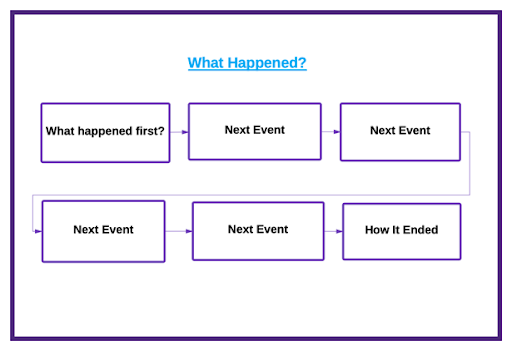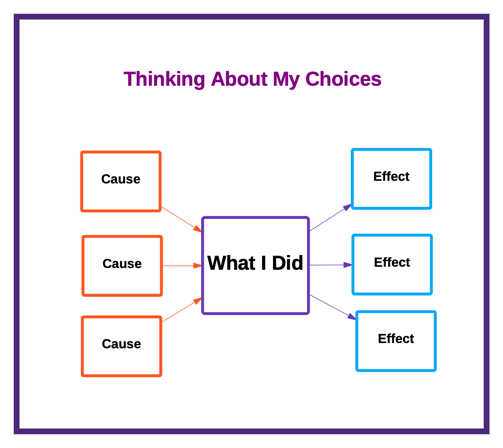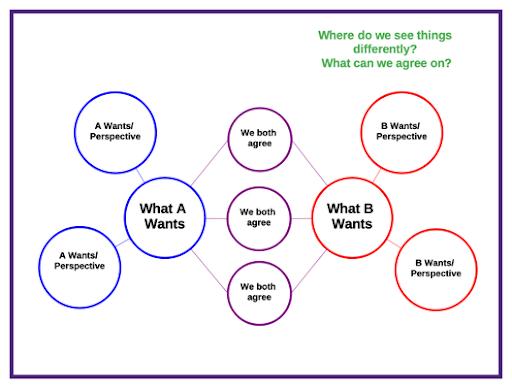Why Social-Emotional Learning is the Secret to Student Success
JANUARY 10, 2022
As students and teachers continue to navigate a pandemic, the need for social-emotional learning (SEL) is more urgent than ever. SEL has long been recognized as an important component of student wellbeing and classroom management. It is also critical for academic success. Teachers can leverage Thinking Maps to help students grow emotional awareness and empathy and build important social skills.
How SEL Impacts Learning
Why does SEL matter? We are all social and emotional beings. In his book Emotional Intelligence, Daniel Goleman asserts, “In a very real sense we have two minds, one that thinks and one that feels. These two fundamentally different ways of knowing interact to construct our mental life.”
In other words, it is not possible to fully separate reason and emotion—we use both in constructing meaning in the world. This is true even when we are engaging with “purely academic” content, such as math, biology or American history. Our emotions tell us what to pay attention to; we have to care about a topic and believe it is important before we can learn effectively. Read more: Emotion and Meaning in Learning.
Social and emotional factors also influence how well we process, retain and comprehend new information. This is related to the “cognitive load” of learning. Students experiencing challenges such as bullying, economic insecurity or mental health problems expend significant cognitive resources thinking and worrying about the issues they are facing. You are probably familiar with this phenomenon yourself: when you are stressed about something, it is always in the back of your mind taking up mental bandwidth, even when you are trying to think about something else. In other words, our social and emotional issues add to the “extraneous cognitive load” we are experiencing, leaving fewer mental resources for learning new things.
On the flip side, an affirmative environment where students feel safe and accepted has a strong positive influence on learning. When students have their social and emotional needs met, they can focus their mental energy fully on the lesson at hand. SEL programs also help students build foundational skills that are important for learning, such as self-awareness, self-regulation and responsible decision making. A meta-analysis of SEL programs showed that students participating in these programs increased academic performance by an average of 11 percentile points compared to peers who did not participate.
Helping Students Cope with Social-Emotional Stress
Many students are facing significant social-emotional challenges, including:
- Social issues at school, including bullying, fractured friendships, ostracism and the endless “popularity contest” common in K-12.
- Home stress, which may range from abuse and neglect to divorce, fights with parents or siblings, or changes in family structure or dynamics.
- Economic insecurity or poverty, with resulting problems related to hunger, unstable housing situations, and reduced access to resources and supplies for learning.
- Individual mental and physical health challenges, such as anxiety, depression, or pain.
These are challenges that have been faced by students for generations, but today’s young learners are facing additional stressors as well. Technology has intensified many social and relational problems, allowing bullies to follow their victims home via cyberbullying and ensuring that every social misstep is preserved for posterity forever. Many students are not emotionally equipped for these new realities.
And of course, the current cohort of students also faces increased stress from the pandemic. Many students lost a year or more of social-emotional skill building as they navigated virtual school through a screen with limited in-person interaction with peers. A large number of students have also fallen behind academically, leading to increased frustration, anxiety and, for older students, worries about college placement and life opportunities. Many families have been under significant economic stress during this time, creating an additional emotional burden on both parents and children. And some children are coping with the loss of a parent, caregiver, grandparent or other loved one.
How do we help our students in these times? Now more than ever, SEL must be a central component of education. Teachers must address the emotional needs of students first to ensure that they are ready and able to learn. They can do this by:
- Creating a safe, positive learning environment built on empathy, with the realization that many students may be facing extraordinary stress right now.
- Connecting students and families experiencing extreme stress to school and community resources for additional help.
- Incorporating SEL into the classroom in a meaningful and structured way to help students develop core personal and interpersonal skills.
SEL and Thinking Maps
A strong SEL program focused on the five core social-emotional learning competencies impacts both the classroom environment as a whole and readiness to learn at the individual student level.
- At the classroom level, SEL supports positive behaviors and interactions between students, creating a safe and positive learning environment with fewer conflicts and distractions.
- For individual students, SEL builds self-regulation skills that support the focus and concentration required for effective learning.

Many Thinking Maps schools are applying the Maps to teach and strengthen SEL skills. Just as the Maps make thinking visible, they also make emotions and behaviors visible. Thinking Maps can be used to help students understand their emotions and choices. For example, consider this set of Maps for analyzing events (such as a conflict between students) and behavioral choices.


The Maps can also be used to facilitate group problem solving and conflict resolution.

Building these kinds of SEL skills can reduce classroom conflict and behavioral problems, resulting in reduced stress levels for students (and teachers!). As a result, students are able to spend more of their finite cognitive resources on learning. Addressing the social-emotional needs of students up front pays ample dividends in student wellbeing, teacher effectiveness, and academic progress.
Thinking Maps Learning Community (TMLC) subscribers can read more and access lesson planning ideas and Map examples here:
Not a TMLC subscriber? Talk to your Thinking Maps representative to unlock your access!
Continue Reading
July 2, 2025
A Meta-Analysis of studies showed that coaching, along with group training, curricular and instructional resources made a larger impact on the effects of teaching and student achievement.
June 16, 2025
At Thinking Maps, we are committed to creating a platform that not only meets but exceeds the expectations of our users. That’s why we’re thrilled to roll out a host of new user experience updates to the Thinking Maps Learning Community (TMLC). These updates represent a significant leap forward in usability, design, and functionality, ensuring a seamless and engaging experience for all users.
May 29, 2025
When it comes to professional learning for teachers, coaching has emerged as an effective method for fostering meaningful, long-term change in teaching practices. By offering personalized support, ongoing feedback, and practical application, coaching meets teachers where they are and provides the tools they need to thrive.
July 15, 2024
"Initiative overload" can cause teachers and school leaders to lose sight of the fundamental practices that have the greatest impact on their goals and mission. When this happens, it's time for a reboot.